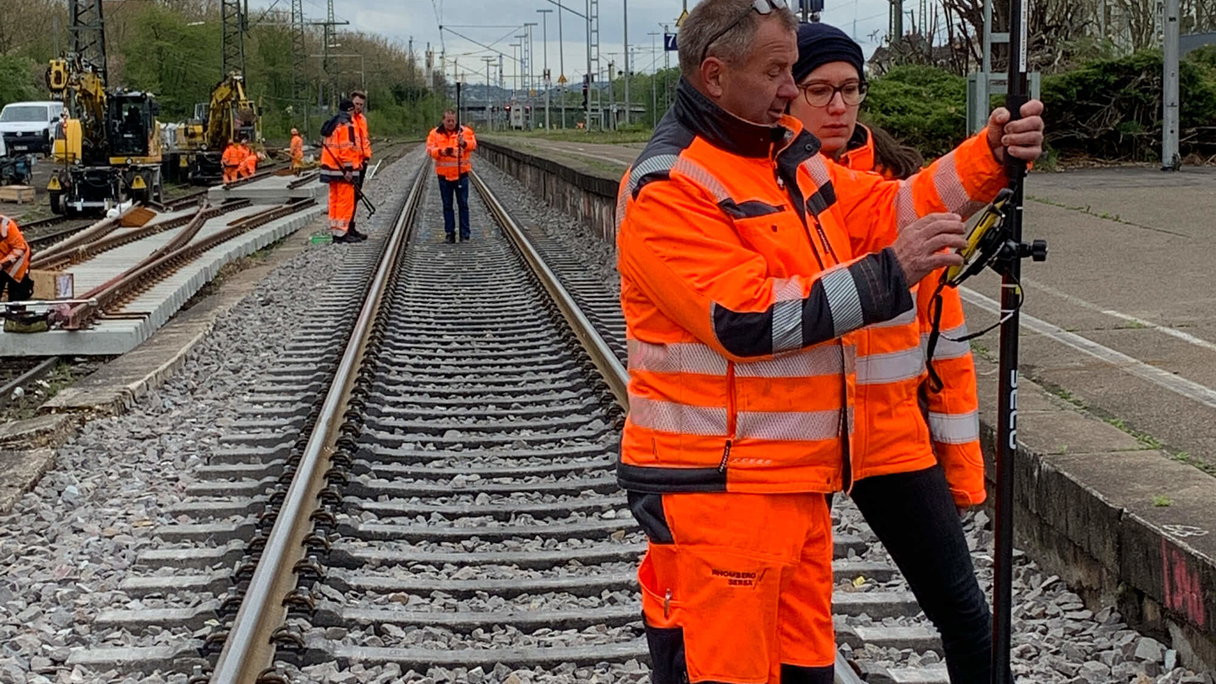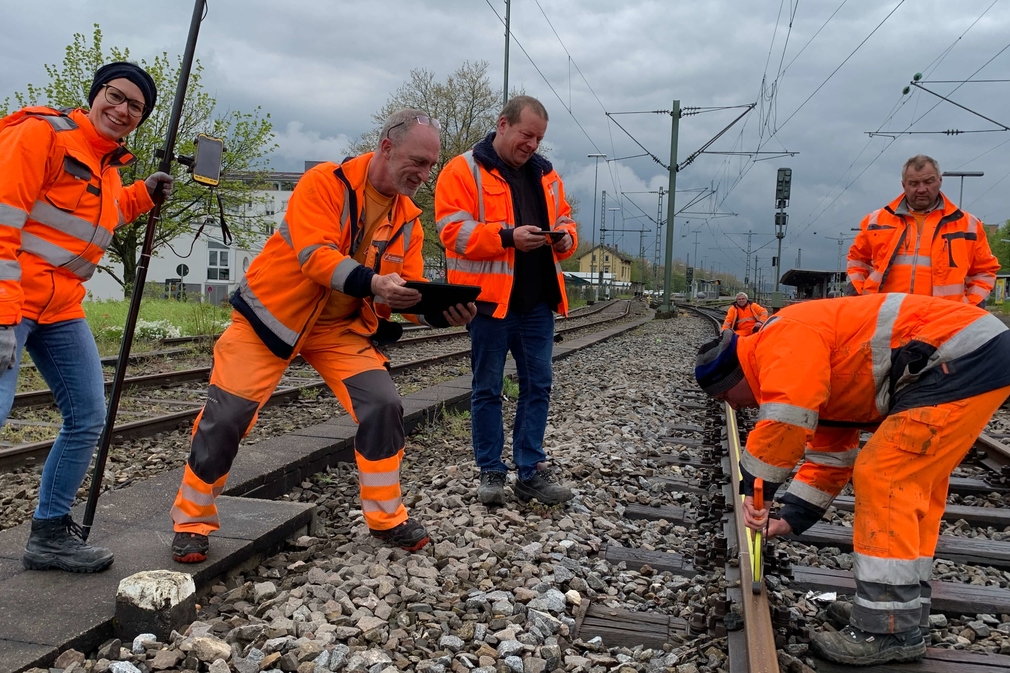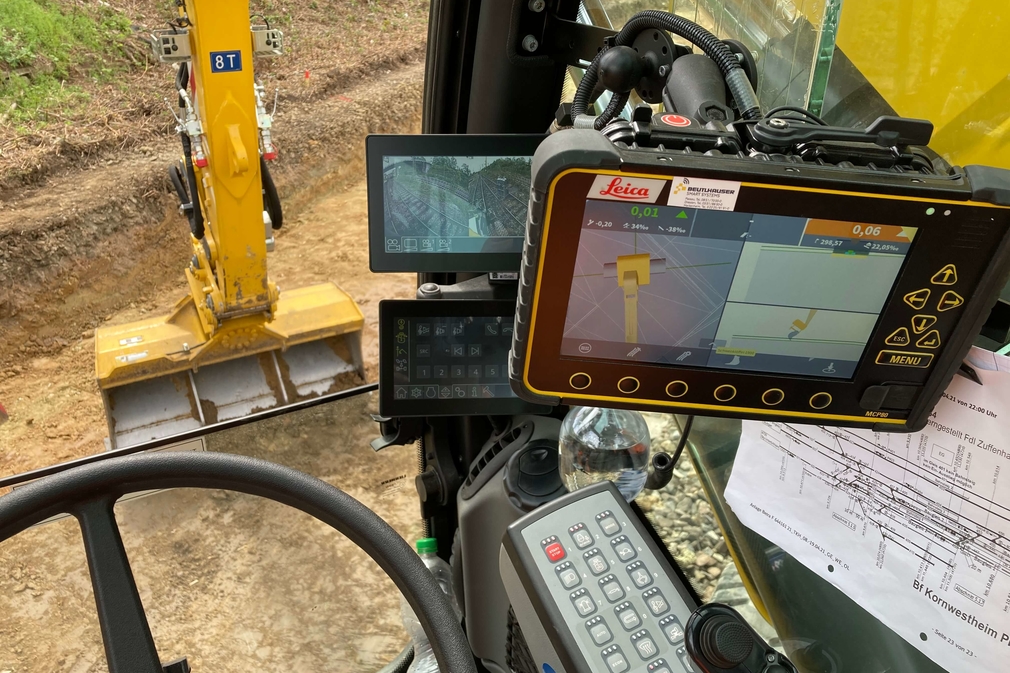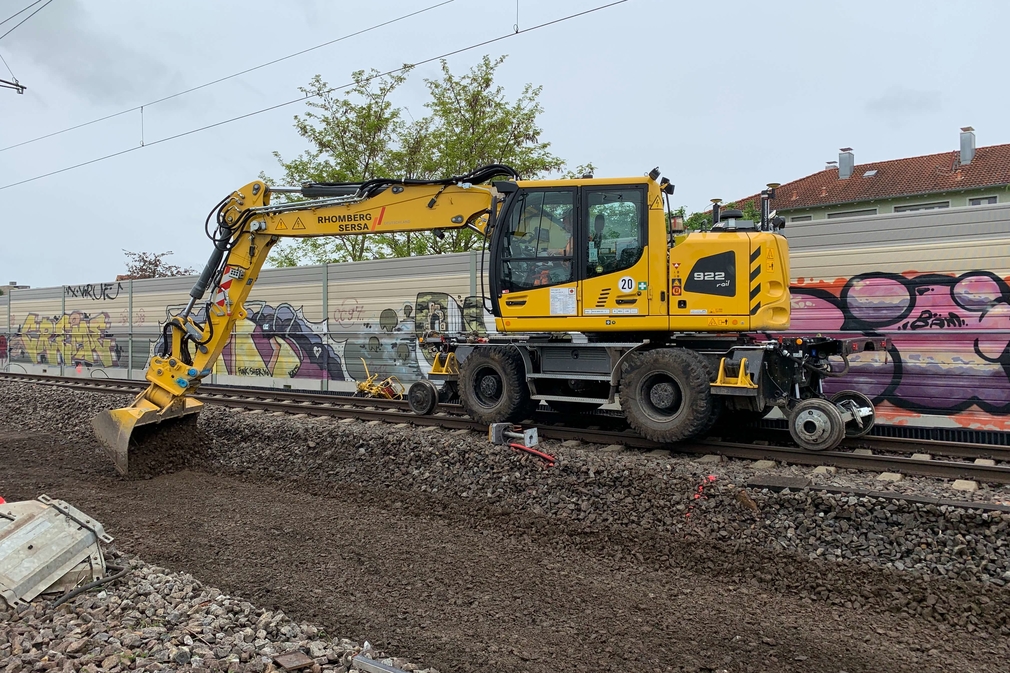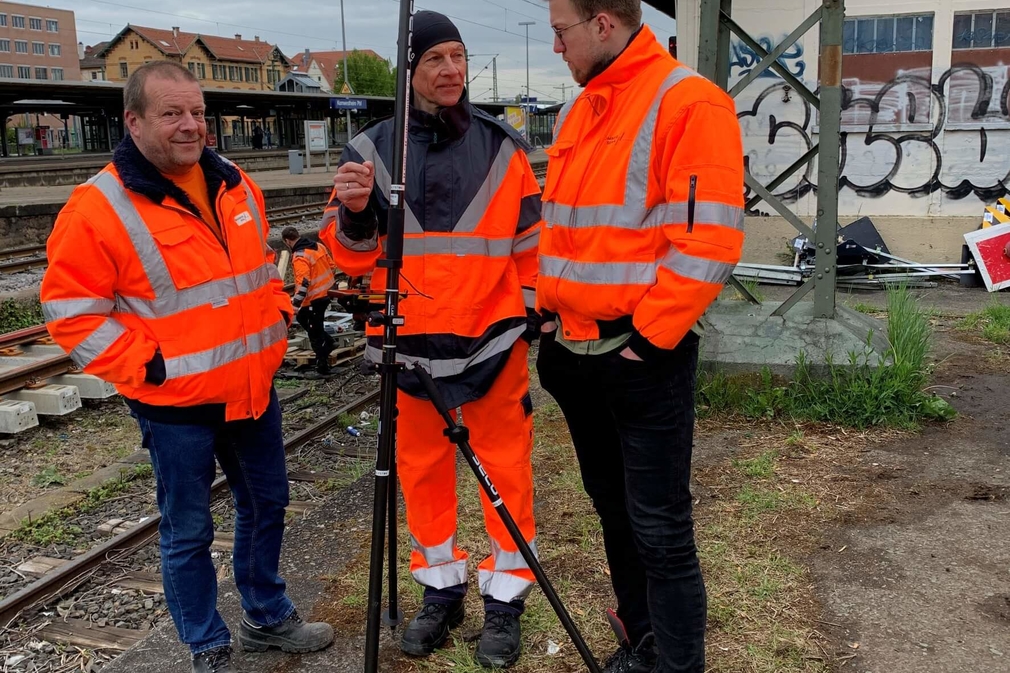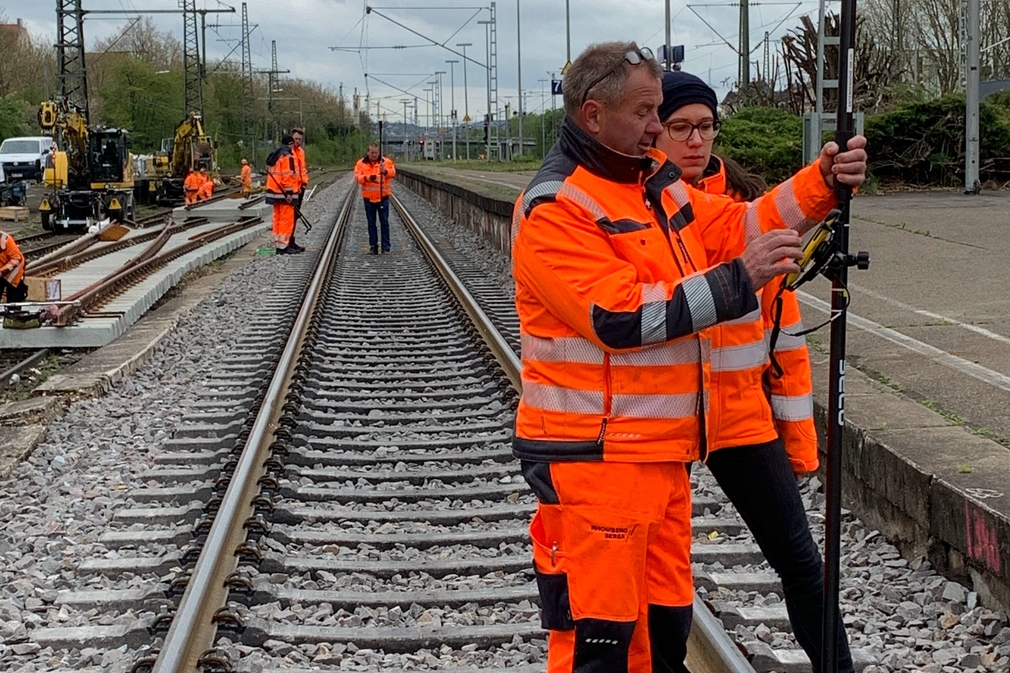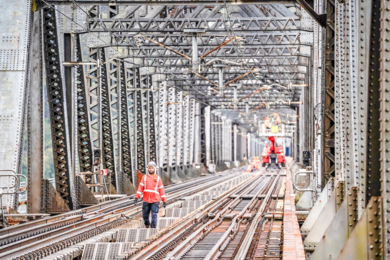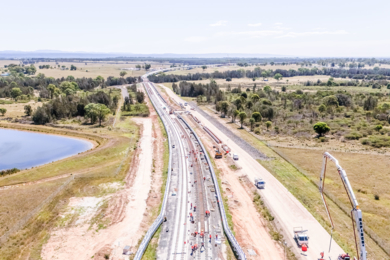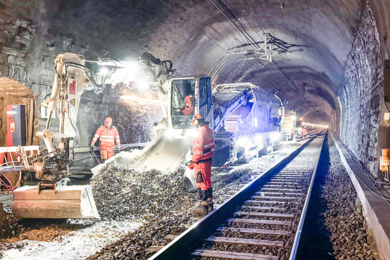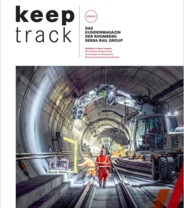New technologies make construction easier.
The “Cannstatt-Stg. Münster + Kornwestheim PBF” project was a huge success for Rhomberg Sersa Deutschland (RSD) for several reasons. In the project, the RSD showed teamwork, honest commitment and true pioneering spirit.
Within a few month and partly over the Easter holidays, 20 points were replaced and 1.500 metres of track were laid in the three train stations of Münster, Cannstatt and Kornwestheim. RSD locations in Dresden and Mühlacker, and Rhomberg Gleisbau GmbH in Bregenz coordinated with the support of Jumbo Tec to ensure compliance with the planned track closure times.
An exciting aspect of this project was the use of new technologies and digitalisation processes. This involved using a Leica 3D machine control system on a road-rail excavator, modeling the digital terrain models (DTM) required for this control system, exploring the possible uses of a foreman's pole, and making further progress on the topic of digital construction day reports. The 3D machine control was used as even small changes can achieve big advantages, resulting in a significant productivity improvement when creating the earth and ballast planum. The machine operator can now carry out this work independently without support, which in turn improves safety at work.
How is this possible? The excavator driver is shown a DTM and his position in the working area on an additional display in the cab. By comparing the as-is situation on the construction site with the digital target situation from the 3D model using sensors on the excavator, the excavator driver knows how far he still has to excavate or to fill. Colleagues who have previously supported the excavator operator in his measuring activities can now be assigned to other tasks on the construction site. The excavator operators at Rhomberg Sersa Germany themselves state that this offers them significant advantages. According to them, the horizontal alignment of the excavator bucket can be detected via an inclination sensor on the display when removing the subgrade, which reduces the amount of rework required. This example clearly shows that the work of the excavator drivers hardly changes in terms of what they do. But it does change in the way they do things. Digitalisation therefore offers the opportunity to use digital tools and data models to optimise, simplify and make the everyday work of our colleagues safer.
The foreman stick enabled a rapid entry into digitalisation. It consists of a GPS antenna and the Siteplan app on a mobile device. This app, using a satellite map and PDF plans, assisted colleagues in quickly getting to grips with the project, navigating around and adding geo-referenced evidence photos to the documentation. In combination with the GPS antenna, significant advantages could be achieved due to centimetre accurate recording of completed construction work thus reducing time-consuming measuring work with tape measure, string and clipboard and allowing digital field measurements to be generated on the computer for billing purposes.
The consistently positive feedback from the construction team encourages managers to continue on their chosen path.
